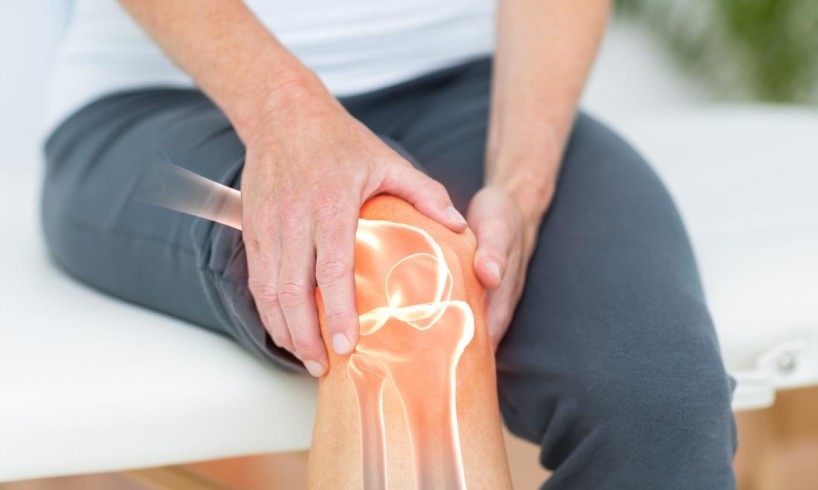
Inflammation of the bacterial joint is a severe and painful joint infection. It is also referred to as septic or bacterial arthritis. Bacteria may enter your joint and cause fast deterioration of cartilage and harm to the bone.
This can lead to severe pain, swelling, redness, and motion loss. Usually, with early medical intervention, you can make a complete recovery. Any delay in therapy, however, could result in continuous joint impairment and even septic shock.
Know the Causes of Bacterial Joint Inflammation
Bacteria that cause joint inflammation can occur by entering your body through skin, eyes, ears, mouth, nose, and mucous membranes. These types of bacteria are Staphylococcus aureus that causes staph infections.
Streptococcus causes strep throat. Streptococcus pneumonia causes bacterial pneumonia, Neisseria gonorrhoeae causes gonorrhea, Mycobacterium tuberculosis causes tuberculosis and Borrelia burgdorferi, which causes Lyme disease. If these infections are not cured right away, it may lead to a severe complication until antibiotics no longer take effect.
Who is Prone to Bacterial Joint Inflammation?
Anyone in any era and gender can be infected with this bacterial inflammation illness. It usually happens, however, in young and old adults. Risk factors include earlier joint surgery and artificial implant, rheumatoid arthritis, lupus, gout, multiple injections of drugs, eczema, psoriasis, weak immune system, unprotected sex, gum disease, diabetes mellitus, smoking, chronic urinary infection, taking suppressant medicine, and thin skin or skin injuries.
If you have any of these diseases, speak to your physician about it. In this manner, you can prevent bacterial infection opportunities.
Symptoms of Having Bacterial Joint Inflammation
Your symptoms determine the sort of bacterium that causes your infection. General symptoms of inflammation of the bacterial joint rapidly occur. That includes elevated body temperature, joint pain, redness and swelling, warm skin over the joint, lack of appetite, fatigue, and fast heart rate. In their hips and shoulders, children generally experience inflammation of the bacterial joint. Adults tend to experience joint pain in their arms, legs, and especially in their knees. The back and neck are influenced less frequently.
Treatments for Bacterial Joint Inflammation
After they recognize the bacterium that causes the infection, your doctor will prescribe an antibiotic. You may be intravenously receiving antibiotics, so the medication flows straight into your bloodstream.
Your physician may offer you a follow-up oral medicine. Antibiotic treatment may take 2 to 6 weeks, depending on the type of bacterial infection you have and your overall medical condition. Example antibiotics you can take for joint inflammation is Ciprofloxacin, and it is available as a generic drug. To get it at a lower cost you may use ciprofloxacin coupon.
Your doctor may drain the fluid around the joint. This enables to lower stress and remove harmful bacteria. This is often performed through arthroscopy. This operation includes consuming and suction fluid using pipes. Another way to eliminate fluid is arthrocentesis. This operation requires a needle to penetrate the joint region. In some cases, during an open procedure, the joint must be irrigated and abridged.
Other treatments include anti-inflammatory drugs that are over-the-counter or prescribed to decrease any swelling and pain. Resting the affected region, elevating the joint and putting in place hot or cold compresses can also help relieve pain and inflammation. Follow the guidelines on how to recover from your doctor.
How will you know that you are Suffering From Joint Inflammation?
Your perspective will enhance with early diagnosis and therapy. Your doctor will look at you and take a thorough history of medicine. Your doctor may ask you about the latest travel, daily events, and your job environment.
There are medical tests that will be conducted, such as blood test to detect harmful bacteria, joint X-ray, and joint fluid sampling, to know the type of bacteria you are getting. Sampling fluid from the impacted joint will assist in identifying the sort of inflammatory bacterial infection. Typically, the joint fluid is transparent and dense. Usually, a bacterial infection changes its appearance.
Takeaway
Any bacterial infection like joint inflammation can cause too much pain to the infected person. If you are already diagnosed with this illness, then always follow your doctor’s instruction and complete the full course of medication, especially if taking antibiotics.
However, if you are not yet having any infection, then do not wait for it! Make yourself clean as possible from inside and out. Help your body to gain enough vitamins in strengthening the immune system to fight against harmful bacteria. Time will come that the effectivity of antibiotics will lessen because of its resistance. It only means that prevention is better than any medicines.
Author Bio: Rohan is a blogger and professional writer he naturally writes articles on a different niche like the business, digital marketing, SEO, health, travel and Lifestyle Category.



